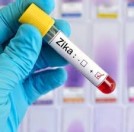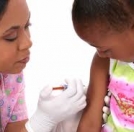World NO Tobacco Day 2011
The tobacco epidemic kills nearly 6 million people each year, of whom more than 5 million are users and ex-users of tobacco and more than 600 000 are nonsmokers exposed to second-hand smoke. The WHO Framework Convention on Tobacco Control is said to be the most powerful tobacco control tool that’s at the disposal of the international health community. Hence, parties of the treaty are encouraged to take full advantage of the of the program, especially in low- and middle-income countries where tobacco industry is more focused.
![]()
To take full advantage of the FCTC, WHO used it as the theme of this year’s World No Tobacco Day.
WHO: World No Tobacco Day 2011 Video Campaign
Read partial Treaty Guidelines:
Restaurants and Bars – Effective measures to provide protection from exposure to tobacco smoke, as envisioned by Article 8 of the WHO Framework Convention, require the total elimination of smoking and tobacco smoke in a particular space or environment in order to create a 100% smoke free environment. There is no safe level of exposure to tobacco smoke, and notions such as a threshold value for toxicity from second-hand smoke should be rejected. The New York City is one of the places in the U.S. wherein smoking ban in NYC parks and beaches was recently implemented.
Tobacco Packaging – Evidence shows that health warnings and messages that contain both pictures and text are far more effective than those that are text-only. See images of smoking effects to health.
Tobacco Advertisement – All tobacco advertising is unacceptable because it tries to normalize tobacco use, which kills more than 5 million people per year (not counting the more than 600,000 people per year who die from exposure to second-hand smoke). According to the treaty, “Each Party shall ‘undertake a comprehensive ban of all tobacco advertising, promotion and sponsorship’”.
Tobacco Tax – The Parties recognize that price and tax measures are an effective and important means of reducing tobacco consumption by various segments of the population, in particular young persons. In Sri Lanka, cigarette taxes are equal to 73% of the retail price, the highest among the 40 parties that reported progress in raising tobacco taxes.
Tobacco Flavor – Some tobacco companies try to mask the harshness of tobacco by adding such substances as sugar, cocoa, vanilla and liquorice. They try to make tobacco appeal to children and adolescents by adding chocolate, strawberry and other candy-like flavorings. According to the treaty’s guidelines, “Parties should regulate, by prohibiting or restricting, ingredients that may be used to increase palatability in tobacco products.”
Tobacco Smuggling – The negotiations of a protocol on illicit trade in tobacco products began in 2008 in Geneva and are expected to conclude in 2012.
Obligation of Parties – Each Party shall develop and disseminate appropriate, comprehensive and integrated guidelines based on scientific evidence and best practices, taking into account national circumstances and priorities, and shall take effective measures to promote cessation of tobacco use and adequate treatment for tobacco dependence.
Source of info: WHO – Some parts or whole parts of paragraphs are lifted from the source.
Other international health organizations, such as the new Global Noncommunicable Disease Network also works it’s way to curb tobacco use as it accounts for 63% of all NCD deaths. Watch video that’s part of NCDnet’s scaled up action to combat noncommunicable diseases.










